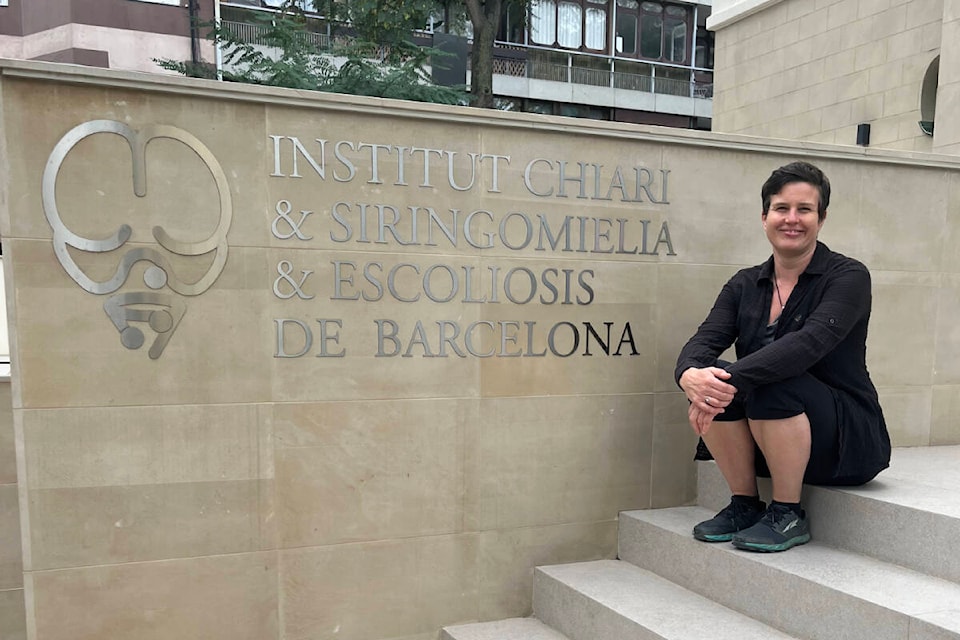Approximately 300 million people worldwide are living with a rare disease. B.C. residents Courtney MacMurchy and Barbara G. are two of them.
In light of International Rare Disease Day on Feb. 29 – the rarest day of the year – Barbara G. (who has requested to keep her last name private) wants people to know why the day matters.
“Since my diagnosis, I’ve found it very difficult to find not only support but advocacy for people with rare diseases,” she said. “Because most of them don’t have the same rare disease, the advocacy just really isn’t there. Through no one’s fault.”
Rare Disease Day defines a rare disease as something that affects less than 1 in 2,000 people. In Barbara’s case, after being diagnosed with celiac disease at the age of 24 in 1984, she went on to develop two rare diseases: autoimmune hepatitis (AIH), where the immune system attacks the liver cells, and primary biliary cholangitis (PBC), a rare progressive liver disorder.
Barbara, who now lives near Victoria, lived in the Yukon at the time.
“So I start researching on the internet, because what do the doctors there know – I’m in the Yukon, they deliver babies and stitch people up,” she said.
Despite the challenges, the veteran faces life one day at a time and has since relocated to the Island to access better medical care.
“Typical positive-minded go-getter, that’s me,” she said.
Rare Disease Day works to advocate for equitable health systems to meet the needs of people affected by the exceptionally uncommon.
There are universal challenges faced by those living with a rare disease, the organization said, including a need for research to be international, a lack of scientific knowledge and quality information on the disease that often results in a delay in diagnosis, and a heavy social and financial burden on patients.
For fellow Greater Victoria resident Courtney MacMurchy, 42, who was diagnosed with Chiari malformation type 1 in March 2023, it meant starting a GoFundMe to get an important surgery in Barcelona.
Chiari malformation is a disease where the cerebellar tonsils descend down into the spinal column, causing significant pressure on parts of the brain and a reduced flow of cerebrospinal fluid. The procedure, done at the Institute Chiari & Syringomyelia, cost just over $30,000 and released a phylum to allow fluids to start flowing again around her brain and back.
RELATED: Sidney woman launches GoFundMe for rare disease treatment
The fundraiser provided enough to cover the costs of the surgery, which was not covered by Canadian medical care, and the family paid for travel expenses.
“The GoFundMe is absolutely what got her there. I don’t know how else we would have done it. We would’ve done it, but it would’ve been a massive debt for the rest of our days,” her mother Maureen MacMurchy said. “We’re so grateful to the Sidney people who stepped in, it was really amazing. And to Peninsula News Review for sharing Courtney’s story.”
Courtney had the surgery in October, and her mother said it was a success.
“They told her it’s a long process, it can be two, even three years, but she’s certainly feeling better than when she went.”
While Chiari is not curable, the hope with the procedure is that the symptoms, such as brain fog and debilitating headaches, will be stopped enough so that Courtney – who is a mother to a 13-year-old – can get back to the point of working and doing the things she did before she fell ill.
“The biggest thing I’m seeing in her is positivity that things are going to get better and there are things that are better,” Maureen said.
Barbara G., is taking things one day at a time, as her prognosis is uncertain and her conditions have no known cause.
“It’s fearful. I think more frustrating than anything because we all have long-term goals for our life … they say we’re not sure how long this is going to affect you, and no one really discusses what to expect as it progresses,” she said.
Like many with a rare disease, she finds it hard to find support or advocacy groups.
“People who actually know what it’s like to live with rare disease, finding individuals like that is very, very hard.”
She also wants people to know something about rare diseases.
“Just because we don’t look sick, cause so many people say that to us, which is almost an insult, you just want people to understand that a lot of illnesses cannot be seen visually and cannot be explained in two to three sentences. And even though we’re a very small portion of society, our needs for advocacy and support are just as important. Rightly so, people are getting their support for their disorders and we should too,” Barbara said.
MacMurchy said that Courtney’s story is a great illustration of how important fundraisers can be for the rare disease community and how awareness brings hope.
“Certainly the fundraising and seeing how people cared, that was something very positive that came out of this experience. She realized she’s not on her own, there are people who care and there’s just no words for the amount of gratitude we have.”
READ MORE: Celine Dion has lost control of her muscles due to illness, says her sister
